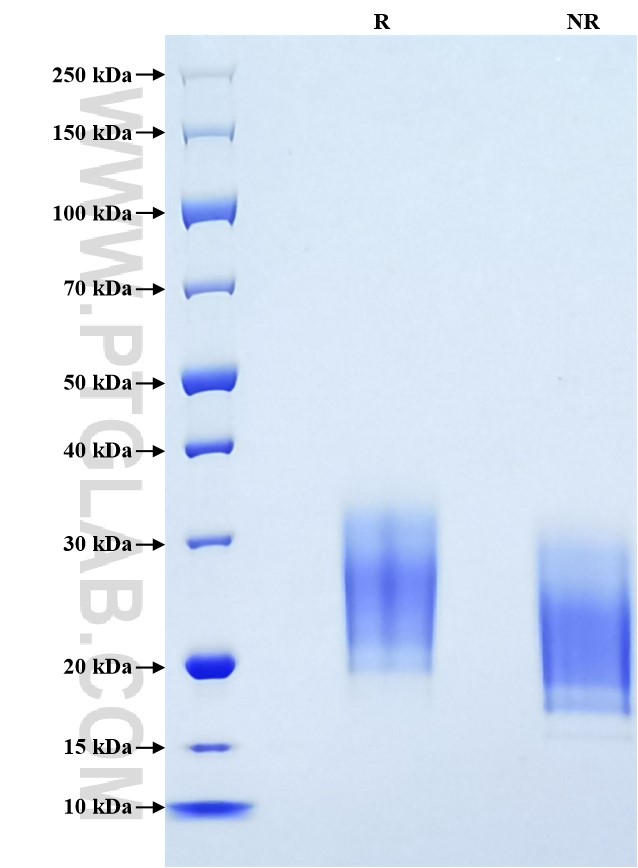Recombinant Rat SCF protein (His Tag)
种属
Rat
纯度
>90 %, SDS-PAGE
标签
His Tag
生物活性
未测试
验证数据展示
产品信息
| 纯度 | >90 %, SDS-PAGE |
| 内毒素 | <0.1 EU/μg protein, LAL method |
| 生物活性 |
Not tested |
| 来源 | HEK293-derived Rat SCF protein Gln26-Ala189 (Accession# P21581-1) with a His tag at the C-terminus. |
| 基因ID | 60427 |
| 蛋白编号 | P21581-1 |
| 预测分子量 | 19.4 kDa |
| SDS-PAGE | 20-33 kDa, reducing (R) conditions |
| 组分 | Lyophilized from 0.22 μm filtered solution in PBS, pH 7.4. Normally 5% trehalose and 5% mannitol are added as protectants before lyophilization. |
| 复溶 | Briefly centrifuge the tube before opening. Reconstitute at 0.1-0.5 mg/mL in sterile water. |
| 储存条件 |
It is recommended that the protein be aliquoted for optimal storage. Avoid repeated freeze-thaw cycles.
|
| 运输条件 | The product is shipped at ambient temperature. Upon receipt, store it immediately at the recommended temperature. |
背景信息
Stem cell factor (SCF) also known as mast cell growth factor, steel factor, and kit ligand, is a hematopoietic growth factor. SCF is a critical protein with key roles in the cell such as hematopoiesis, gametogenesis and melanogenesis. SCF activates multiple signal pathways by binding with c-kit receptor. SCF and its receptor, c-kit ligand (KL), are up-regulated in particular human malignancies including gastrointestinal stromal tumor (GISTs), breast cancer, hematopoietic cell, myeloid leukaemia, and glioma. The SCF/c-KIT system also plays a relevant role in cell fate decision, and its activity is widely known to control cell proliferation, differentiation, survival and apoptosis.
参考文献:
1. Gu Y, et al, (2011) PLoS One. 6(10):e25984. 2. Pedersen M, et al. (2008) Biochem Biophys Res Commun. 377(1):98-103. 3. Talaiezadeh A, et al. (2012) Contemp Oncol (Pozn). 16(4):306-9. 4. Bai CG, et al. (2012) World J Gastroenterol.18(23):2929-37. 5. Lennartsson J, et al. (2012) Physiol Rev. 92(4):1619-49. 6. Liang J, et al. (2013) Int J Biol Sci. 9(5):435-43.


